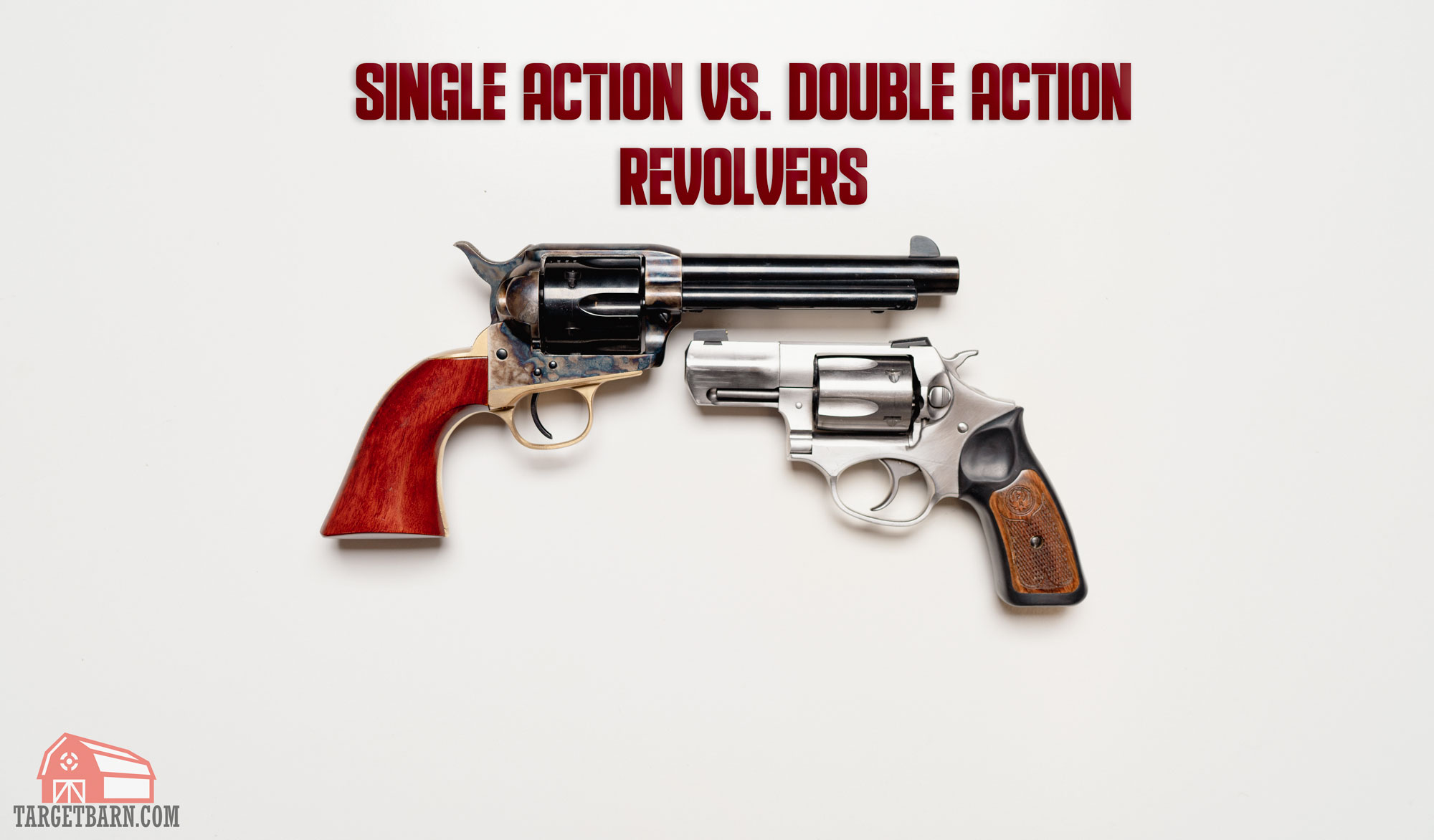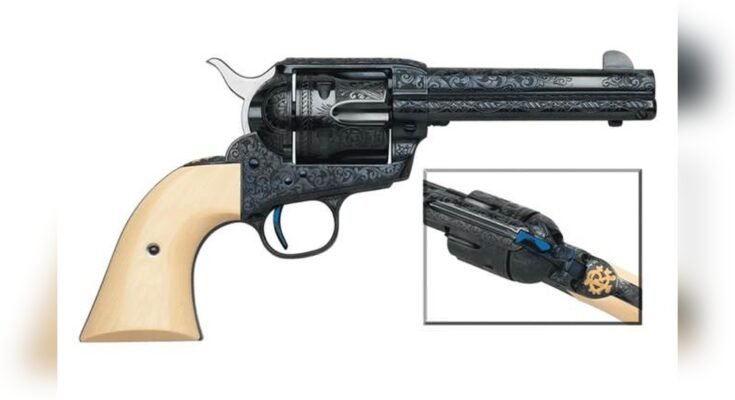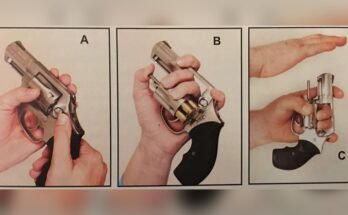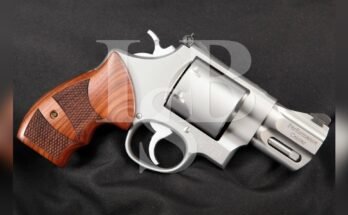Have you ever wondered what makes a single-action revolver tick? If you’re curious about how this classic firearm works, you’re in the right place.
Understanding its operation can give you a new appreciation for its design and power. By the time you finish reading, you’ll know exactly how your single-action revolver functions with every pull of the trigger. Ready to unlock the secrets behind this iconic weapon?
Let’s dive in.

Basic Mechanism
The basic mechanism of a single-action revolver is simple yet effective. It relies on manual operation to prepare the firearm for each shot. The user must cock the hammer back before pulling the trigger. This action sets the revolver’s internal parts in motion, readying it to fire.
Understanding this mechanism helps appreciate how the revolver works. The process involves two main parts: the trigger and hammer interaction, and the cylinder rotation. Each part plays a key role in firing the bullet accurately and safely.
Trigger And Hammer Interaction
The hammer must be manually cocked by the shooter. Pulling the hammer back stores energy in the spring inside. When the trigger is pulled, it releases the hammer. The hammer then strikes the firing pin or primer. This impact ignites the gunpowder in the cartridge, firing the bullet.
The trigger alone does not cock the hammer in a single-action revolver. The hammer controls the firing sequence, making the trigger pull lighter and shorter. This design allows for better accuracy and control.
Cylinder Rotation Process
The cylinder holds multiple cartridges in separate chambers. Cocking the hammer causes the cylinder to rotate. This rotation aligns a new cartridge with the barrel and firing pin. Each shot uses a fresh cartridge, preventing misfires or jams.
The cylinder rotation is precise and locks into place. This ensures the bullet travels straight through the barrel. The shooter must cock the hammer for each shot, making the process deliberate and safe.
Loading And Unloading
Loading and unloading a single-action revolver is straightforward. It requires attention and care for safety. Understanding the process helps in handling the firearm correctly.
Chamber Alignment
Start by opening the loading gate on the revolver’s side. This gate gives access to the cylinder chambers. Rotate the cylinder manually to line up each chamber with the loading gate. This alignment allows you to load or unload cartridges one by one. Make sure each chamber is properly lined up before inserting or removing a cartridge.
Ejecting Spent Cartridges
After firing, open the loading gate and align a chamber with it. Use the ejector rod, located under the barrel, to push out spent cartridges. Press the rod firmly to eject the empty case from the chamber. Repeat this for each fired chamber. This method clears the revolver and prepares it for fresh cartridges.
Firing Sequence
The firing sequence of a single-action revolver is simple and direct. It involves a few clear steps that prepare the gun to shoot. Each step must happen in order for the revolver to work correctly. Understanding this process helps you see how this classic firearm operates.
Hammer Cocking
The first step is cocking the hammer. You pull the hammer back with your thumb. This action rotates the cylinder, aligning a new bullet with the barrel. The hammer locks in the pulled-back position, ready to release.
Trigger Pull
Next, you pull the trigger slowly. Pulling the trigger releases the hammer. The hammer moves forward quickly under spring tension. This movement is the key to firing the bullet.
Bullet Discharge
As the hammer hits the firing pin, it strikes the bullet’s primer. This impact ignites the gunpowder inside the bullet casing. The explosion pushes the bullet out through the barrel at high speed.

Safety Features
Single-action revolvers include important safety features to prevent accidental firing. These features make the firearm safer to handle and carry. Understanding these safety mechanisms helps users operate the revolver confidently and responsibly.
Hammer Positioning
The hammer position plays a key role in safety. When the hammer is down, it rests away from the firing pin. This position stops the gun from firing accidentally. Users must manually cock the hammer before pulling the trigger. This extra step reduces the risk of unintentional shots.
Transfer Bar Mechanism
The transfer bar mechanism adds another layer of safety. It only allows the hammer to strike the firing pin if the trigger is fully pulled. Without the trigger pull, the transfer bar stays out of place. This design prevents the gun from firing if dropped or bumped. It helps keep the revolver safe during everyday use.
Advantages Of Single-action Design
The single-action revolver stands out for its clear and efficient design. It offers shooters several key benefits. These benefits make it popular among firearm enthusiasts and collectors. Understanding these advantages helps appreciate why this design remains relevant.
Simplicity And Reliability
Single-action revolvers have fewer moving parts. This simplicity reduces the chance of mechanical failure. Fewer parts also make cleaning and maintenance easier. The straightforward mechanism means the gun works smoothly over time. Users can trust the revolver in different conditions. This reliability makes it a dependable choice for many shooters.
Trigger Pull Characteristics
The trigger on a single-action revolver is light and crisp. It requires less force to fire the gun. This results in better accuracy for the shooter. The clear trigger break helps with precise shots. The smooth trigger pull makes it easier to control. This feature is especially useful for target shooting or hunting.
Common Misconceptions
Many people have wrong ideas about how a single-action revolver works. These misconceptions can cause confusion about its use and safety. Understanding the facts helps users handle these firearms better.
Single-action revolvers have a simple mechanism, but some think they are complicated or unsafe. Clearing up these myths makes them easier to appreciate.
Difference From Double-action Revolvers
Some believe single-action revolvers work just like double-action ones. They do not. Single-action requires the hammer to be pulled back manually before each shot. Double-action pulls the hammer and fires with one trigger pull.
This difference affects speed and ease of shooting. Single-action is slower but often more accurate. Double-action allows quicker firing but may reduce precision.
Handling And Maintenance
Many assume single-action revolvers need constant complex care. They do not. Regular cleaning and simple checks keep them in good shape.
Because they have fewer moving parts, single-action revolvers are easier to maintain than some think. Proper care prevents malfunctions and extends their life.

Frequently Asked Questions
What Triggers A Single-action Revolver To Fire?
A single-action revolver fires when the hammer is manually cocked. Pulling the trigger then releases the hammer, striking the firing pin and igniting the cartridge.
How Do You Load A Single-action Revolver?
You load a single-action revolver by opening the loading gate. Insert cartridges into each chamber of the cylinder, then close the gate securely.
Why Is Cocking The Hammer Essential In Operation?
Cocking the hammer rotates the cylinder, aligning a new cartridge. This action also compresses the hammer spring, preparing the revolver to fire.
Can A Single-action Revolver Fire Repeatedly Without Cocking?
No, a single-action revolver requires cocking the hammer before each shot. The trigger only releases the hammer; it does not cock it.
Conclusion
A single-action revolver works by manually cocking the hammer before each shot. This action rotates the cylinder and prepares the gun to fire. Its simple design makes it reliable and easy to use. Many people appreciate its classic style and straightforward operation.
Understanding this process helps users handle the revolver safely and effectively. The single-action revolver remains a popular choice for those who value tradition and simplicity in firearms.



